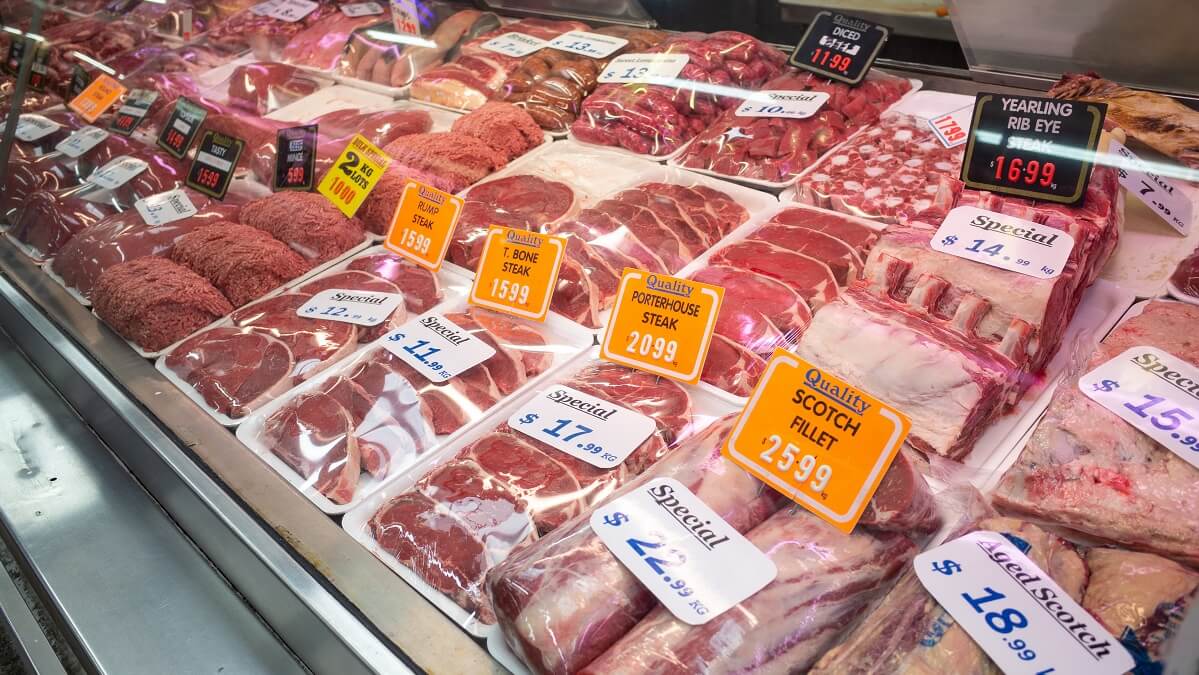Here’s a secret most butchers won’t want you to know: the cheapest cuts of meat are often the tastiest, so long as you cook them the right way.
This is good news for anyone who faces the daily challenge of making ends meet (no pun intended, although welcomed!). Cheap cuts of meat are generally the toughest, but cook them a little longer and these cuts often have more flavour than their expensive counterparts.
And, as butchers usually buy whole animals, inexpensive cuts of meat, such as those that follow, are always readily available.
Brisket
Brisket is cut from the breast or lower chest of a cow. As cows don’t have collar bones, the muscles in this area support about 60 per cent of the animal’s body weight, so it requires the right cooking to tenderise the connective tissue. Brisket can be braised, pot-roasted, slow-cooked, added to soups or rubbed with a spice rub or marinade and slow barbecued.
Skirt
Taken from the underbelly of the cow, skirt steak is prized for its flavour and very cheap to buy. It should not be cooked beyond medium though, otherwise it becomes very tough. You’ll also need to remove the membrane before cooking. It’s also best to marinate this cut, both for extra flavour and to maximise tenderness. Skirt can be slow-braised, quickly pan-seared or grilled and is great for fajitas, stir-fry, churrasco or in Cornish pasties.
Flank
The flank comes from the abdominal muscles or buttocks of the cow in thick hindquarter and forequarter varieties. Flank steak can be grilled, pan-fried, broiled or braised and is usually cut across the grain to increase tenderness. It’s also a good one for mincing. Look for flank steaks that are bright red in colour.
Silverside
Silverside is a lean cut that comes from the hindquarters of a cow. The name silverside is derived from the silver wall on the side of the cut, which is the long, fibrous skin that has to be removed prior to cooking. It’s great for roasting, sliced into minute steaks, or used for corned or salted beef.
Chuck and blade steak
Bone-in chuck steaks are one of the least expensive cuts of meat. Chuck steaks come from just below the neck around the shoulder area of a cow and they’re ideal for braising, pot-roasting or, due to the richness of flavour, minced and used for burgers or meatballs. Blade steaks come from the same area, but are cut across the blade to eliminate the connective tissue. Due to the balance of meat and fat and its marbling, blade steaks are often recommended over fillets, sirloins or rib eyes for its rich flavour and cost-effective price.
Shin
Obviously taken from the leg, the shin comes with a bone intact, so it’s ideal for stews, casseroles and dishes such as Osso Bucco. Again, as the shin supports a lot of weight, the connective tissues are best slow-cooked so they break down. When cooked over low heat, beef shin is a tasty, tender cut of meat with rich flavour.
Leg or shank
A beef leg is similar to the shin, so it’s best cooked for a long time in moist heat or plenty of liquid. Beef leg or shank is an ideal cut for our Beef Bourguignon or Osso Bucco. It’s also good for beef broth and soup stock.
Top rump
Also known as thick flank, top rump is a lean cut that’s ideal for slow roasting or can be thinly sliced into extremely economical steaks for frying. Best to make sure it stays a bit pink on the inside, otherwise it can become tough.
Which is your favourite inexpensive cut of beef? Do you have a secret way of preparing these cuts that makes them extra special? Why not share your kitchen prowess with our members?
Also read: Eight myths about beef mince you shouldn’t believe

